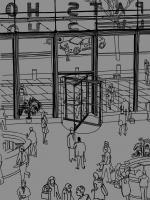architecture
Articles tagged with architecture
Tag Archive
- activism
- activists
- Afrique
- afro cinema
- afro-brazilian
- afro-music
- angola music
- angolan music
- annett stenzel
- antifa
- arab spring
- archive
- artes performativas
- artivism
- Bab Septa
- Bayreuth
- black artists
- Black movement
- Cameroon
- Carlos Paca
- CES
- Chomsky
- cinema africano
- Coimbra Biennial of Contemporary Art
- community
- Conceição Evaristo
- crio
- crise
- culturas afrobrasileiras
- curator
- dailylife
- Dambudzo Marechera
- dance company
- decolonisation
- Deleuze
- descobrimentos
- Descolonizing Decolonization
- direitos humanos
- Dombe Grande
- Ella Baker
- Ephemeral Landscapes
- erosion
- escrita
- Exhibition-Fair Angola 1938
- femini
- Fernando Anuang´a
- Flora
- For Mozambique
- Freud
- gender equality
- German filmmaker
- Harare
- herero
- imagination
- insurreições
- jewish culture
- João Pedro George
- JSF #2
- Kurdish people
- Language
- LGBTI
- Licínio Azevedo
- litterature
- lugar de fala
- Lula
- Lumumba Square
- Lusosphere
- Manthia Diawara
- Marcelino da Mata
- migrações
- Mississippi
- mitos
- Moçâmedes
- morocco
- museu das descobertas
- museum
- Mwamby Wassaky
- Nina Simone
- Nova Lisboa
- pensamento
- perfomance
- poem
- pop culture
- project
- public space
- Racismo
- representation
- revolução
- romance
- Sao Tomé et Príncipe
- Sara Chaves
- Slavery
- sound
- spaces of invention
- Spielart festival
- The Sudanese Revolution
- todos festival
- video
- Walter Salles
- “Sexual Misconduct in Academia”
 This particular building evoked the Lebanese capital for various reasons, not only its colonial-style architecture and Ottoman-esque windows but also the fact that one of its sections was fully collapsed – a common architectural repercussion in the formerly relentlessly celebrated “Paris of the Middle East”. Following its so-called “golden age” in the mid-20th century, Beirut had gone on to host, inter alia, a 15-year civil war (1975-90), brutal Israeli military assaults backed by the United States, vast post-war demolitions in the interest of historical amnesia and ever-savage elite enrichment, and the Beirut port explosion of August 2020.
This particular building evoked the Lebanese capital for various reasons, not only its colonial-style architecture and Ottoman-esque windows but also the fact that one of its sections was fully collapsed – a common architectural repercussion in the formerly relentlessly celebrated “Paris of the Middle East”. Following its so-called “golden age” in the mid-20th century, Beirut had gone on to host, inter alia, a 15-year civil war (1975-90), brutal Israeli military assaults backed by the United States, vast post-war demolitions in the interest of historical amnesia and ever-savage elite enrichment, and the Beirut port explosion of August 2020.  Compiled from episodes of their show, which has gained millions of listeners over the past 10 years, the book introduces us to mysteries that most of us have never considered. Why are manhole covers round? Why do the Japanese infuse them with elaborate decorations? What do painted yellow symbols on streets tell us? Why are traffic lights red on top and green on bottom? What might we notice about the designs and support systems of buildings and bridges? Why have so-called love locks or love padlocks become a problem around the world? Why are some streets straight and others curvilinear?
Compiled from episodes of their show, which has gained millions of listeners over the past 10 years, the book introduces us to mysteries that most of us have never considered. Why are manhole covers round? Why do the Japanese infuse them with elaborate decorations? What do painted yellow symbols on streets tell us? Why are traffic lights red on top and green on bottom? What might we notice about the designs and support systems of buildings and bridges? Why have so-called love locks or love padlocks become a problem around the world? Why are some streets straight and others curvilinear?  The cinemas in Angola are points of reference in the towns where they found a home. And there are many of them. It’s the kind of infrastructure that you find all over the country, because their heyday started way before independence, allowing the Portuguese colonial authorities to take entertainment – but especially regime propaganda – all over the country. What remains for the telling are the architectural lines, the pleasure for shows and multi-purpose spaces.
The cinemas in Angola are points of reference in the towns where they found a home. And there are many of them. It’s the kind of infrastructure that you find all over the country, because their heyday started way before independence, allowing the Portuguese colonial authorities to take entertainment – but especially regime propaganda – all over the country. What remains for the telling are the architectural lines, the pleasure for shows and multi-purpose spaces. 
